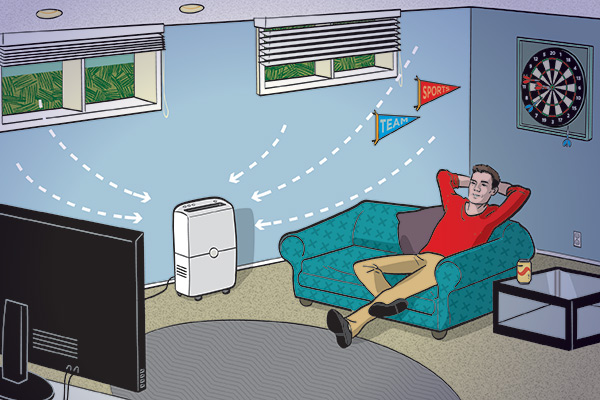How Long Does a Dehumidifier Take to Dry a Room?

A dehumidifier is an essential appliance that reduces the level of humidity in your home, improving air quality and preventing moisture-related issues like mould and mildew. It works by pulling moisture from the air, passing it over cooling coils, and then collecting the condensed water in a tank or draining it out through a hose. This process helps make the air drier and more comfortable, particularly in damp rooms like basements or bathrooms.
However, if you're wondering how long it takes for a dehumidifier to dry out a room, the answer depends on several factors. In this article, we will explore those factors in detail and help you understand how long your dehumidifier will take to dry your room.
Factors That Affect the Dehumidification Time
The time it takes for a dehumidifier to dry a room varies based on multiple factors:
-
Room Size and Volume: Larger rooms take longer to dehumidify compared to smaller rooms. The larger the space, the more air the dehumidifier needs to process.
-
Humidity Level in the Room: If the room is heavily saturated with moisture, it will take longer to dehumidify. The more moisture in the air, the more the dehumidifier has to work to remove it.
-
Type of Dehumidifier: Different types of dehumidifiers have varying drying speeds. For example, compressor-based models are slower in extremely humid conditions, while desiccant models may work faster in colder environments.
-
Temperature and Airflow: Warmer air holds more moisture, which could make the dehumidification process slower if the temperature is low. Adequate airflow also accelerates the drying process.
Types of Dehumidifiers and How They Affect Drying Speed
There are three primary types of dehumidifiers, each with its own drying speed and efficiency.
-
Compressor-based Dehumidifiers: These are the most common and work by condensing moisture from the air. They are highly energy-efficient and effective in larger spaces. However, they may take longer to dry the room in extremely humid conditions or in colder temperatures.
-
Desiccant Dehumidifiers: These use moisture-absorbing materials like silica gel to remove humidity. They are effective in cooler environments and smaller spaces, but they consume more power than compressor-based units.
-
Thermoelectric Dehumidifiers: Compact and quiet, these dehumidifiers use a thermoelectric cooler to condense moisture. They work best in smaller rooms and are less effective for larger spaces.
Comparison of Dehumidifiers: How Long Each Type Takes to Dry a Room
To better understand how long each type of dehumidifier takes to dry a room, here's a comparison chart based on room size, humidity, and other factors:
| Dehumidifier Type | Room Size | Humidity Level | Time to Dry a Room | Advantages | Disadvantages |
|---|---|---|---|---|---|
| Compressor-Based | 20–50 m² | High | 6–10h | Energy-efficient, ideal for large rooms | Slower in extreme humidity |
| Desiccant Dehumidifiers | 10–30 m² | High | 4–8 h | Faster in cold environments | Less energy-efficient |
| Thermoelectric Dehumidifiers | 10–20 m² | Moderate | 2–4 h | Compact, quiet | Not ideal for large spaces |
Real-World Scenarios: How Long Does It Take to Dry Different Room Sizes?
In real-world conditions, the drying time can vary. For example:
-
Small Room (10m²): In a small room with moderate humidity, a thermoelectric dehumidifier might take around 2-3 hours to dry the room completely.
-
Medium Room (30m²): A compressor-based dehumidifier would take approximately 6-8 hours to dry a room of this size, depending on the humidity level.
-
Large Room (50m²): Larger rooms can take up to 10 hours with a compressor-based dehumidifier, especially if the humidity level is high.
Tips for Maximising the Efficiency of Your Dehumidifier
To get the most out of your dehumidifier, here are some useful tips:
-
Proper Positioning: Ensure your dehumidifier is placed in a central location with good airflow.
-
Maintenance: Clean the filter regularly and empty the water tank to ensure smooth operation.
-
Adjust Settings: Set your dehumidifier based on the room size and humidity level. For best results, use the recommended settings for your specific model.
By understanding the factors that affect dehumidifier efficiency, you can choose the right model and ensure it works as effectively as possible. If you're looking for a high-quality dehumidifier to tackle humidity in your home, check out the range at Newentor.co.uk for optimal results.




Leave a comment